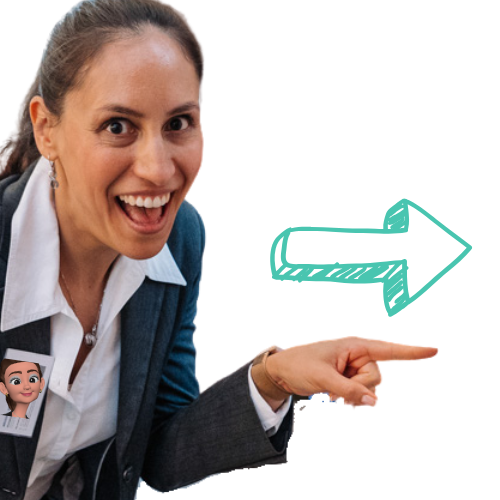Impact that others can see!
Stakeholder Integrated Coaching = visible development
Stakeholder Integrated Coaching makes change tangible. This coaching is based on a proven principle: development has a strong impact when it not only takes place internally, but is also visible in the environment. Triangle Coaching defines development goals for the coachee, the manager, and the coach. The stakeholder approach goes beyond this by involving important people from the work environment.
What is Stakeholder Integrated Coaching?
Stakeholder Integrated Coaching (SIC) is based on Marshall Goldsmith's concept of Stakeholder-Centered Coaching and introduces a new dynamic to the process, as key stakeholders from your environment are actively involved. Here, you don't just think about yourself - you actively work with input from people you trust.
How Melissa uses Stakeholder Integrated Coaching and doesn’t follow the exact process of Goldsmith:

Select stakeholder: You define people from your immediate work environment—at least three and ideally include a direct report, a peer, and your boss. You can nominate up to eight people.

Set goals: Together with your coach, you can set behavioral goals or desired changes to be achieved in coaching. If you don't want to define clear goals, you can review the standard document used by Melissa. Maybe it will suit you.

Inform stakeholders: Your coach will conduct brief introductory phone calls with the nominees to inform them about the SIC process and will organize a one-hour meeting for the nominees.

Initial Feedback: During this one-hour meeting, you will be asked about agreed-upon or general leadership skills. The stakeholders will award points from 1 to 10.

Start of coaching: The coaching then begins, starting with a summary of the nominees' statements. The first step is to work with you to find out which of the feedback you are already aware of, which you want to work on, and which you don't.

Interim evaluation: The coaching begins and halfway through, your coach meets with the stakeholders again, this time for 30 minutes, to review your leadership skills once more. Again, the stakeholders award points and initial changes may already be visible. The development is communicated publicly, i.e., "feedforward" is given, because it measures how the participants perceive the change—not just how you see yourself. The goal is to change the effect, not just the behavior itself.

Final evaluation: Shortly before the end of the coaching, your coach meets with your nominated stakeholders one last time for 30 minutes to receive a final score.
Optionally, you can also agree with Melissa that instead of a final coaching session with you, she conducts a journey review, which then serves as the basis for a coaching report on your coaching journey. The purpose is to give you something you can look back on in a few years — to proudly reflect on your progress.
The goal: Development is not only planned, but also measurably accompanied – through the perception of those who work closely with you. This coaching is particularly suitable for managers or key personnel who want to enhance their effectiveness. They actively help shape the organizational context.
In this way, coaching becomes not an isolated action, but a networked change process that influences the entire system.
What are the benefits for you?
- You have a clear direction thanks to concrete goals and measurability.
- You receive feedback so that you can feel your progress. In addition, it leads to a genuine dialogue about the corporate culture and feedback on it.
- Others recognize your personal development and progress.
The change lasts because it is anchored in the system.

